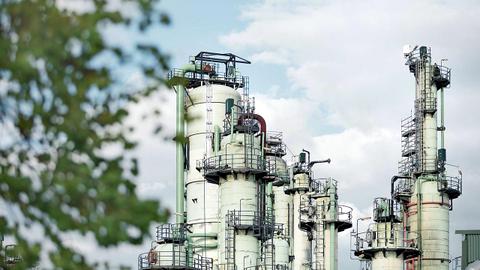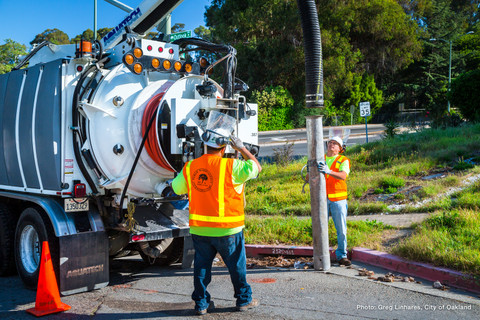A Fuel Switch for Today Continues To Evolve
In the past, renewable diesel was considered a niche product that failed to attract mainstream investor interest. Today, it is a cost-neutral way for fleet owners to achieve their goals by allowing them to convert an entire diesel-powered fleet to alternative fuel overnight.

Renewable diesel, a substitute for conventional petroleum diesel, is produced from renewable resources such as natural fats, vegetable oils and greases. It’s chemically similar to petroleum diesel, but is 100% renewable and sustainable, making it the greenest diesel on the market. Renewable diesel is a drop-in alternative to petroleum diesel and requires no vehicle modifications.
Renewable diesel can be produced using various technologies including those that process solid biomass, liquid biomass, waste gasification and pyrolysis. Differing technologies have their benefits and challenges. One challenge is feed pretreatment, which can be done with acid, high-pressure water and/or adsorbents, depending on the technology selection. Acid and aqueous products run significant risk for carryover contamination of the hydrotreating catalyst, and both of these can be mitigated with optional deacidification. The market continues to innovate and improve on these pretreatment processes to both prepare the “oil” for hydrotreating and to reduce the process consequences that arise from these emulsion prone pretreatment processes.
New Treatment Processes
There is an available technology that uses a mass transfer device with caustic, acid or water as the treating reagent in liquid hydrocarbon streams. The device is a vertical vessel packed with proprietary fiber that achieves non-dispersive-phase contact without the problems inherent in conventional dispersive mixing devices, such as aqueous phase carryover, hydrocarbon losses, lack of turndown ability, long settling times, plugging and flooding. Because the aqueous phase adheres to the fibers rather than being dispersed into the hydrocarbon phase, carryover and uncontrollable emulsions are virtually eliminated. Pretreatment conducted over this technology can greatly improve the advantages of the process while reducing the downstream consequences of carryover from the system. This allows the longest life and best performance of downstream hydrotreaters.
The CO2 and H2S within these production processes are usually treated in a downstream amine unit. The acid gas from the amine unit, as well as light products produced containing unacceptable levels of sulfur, can then be treated with a proprietary liquid reduction-oxidation process that converts H2S to elemental sulfur. The result is a renewable fuel that can be used as a drop-in replacement for any diesel and biodiesel fuel in the transportation industry. The makeup of renewable diesel makes it combust with maximum efficiency while decreasing regenerations in the particulate filters and injector maintenance frequency—and because it does not contain impurities or aromatics, it’s odorless.
Some fleet owners can achieve sustainability goals overnight by converting an entire diesel-powered fleet to renewable diesel.
Renewable Diesel in UPS Fleet Vehicles
In 2015, the National Renewable Energy Laboratory (NREL), in cooperation with United Parcel Service (UPS) and Clean Cities’ National Clean Fleets Partnership, compared the fuel economy and emissions impact of renewable diesel versus petroleum diesel in fleet vehicles.

To gather real-world operational field data, NREL instrumented 12 vehicles–six regional tractors and six package-delivery vans–with data recorders. Representative drive cycles were selected for chassis dynamometer evaluation to determine the fuel economy and emissions impact of renewable versus petroleum diesel in a controlled setting. Fuel properties of the renewable diesel and petroleum diesel were also analyzed, which revealed that the renewable diesel was less dense than petroleum diesel and exhibited a higher mass-based heating value, yet lower volume-based heating value.
The NREL tests concluded that renewable diesel reduces carbon dioxide emissions by 4.2% on average compared to petroleum diesel, which is attributable to the higher mass-based heating value and lower carbon-to-hydrogen ratio of renewable diesel. Fuel consumption and economy trended strongly with mass and volume-based heating values, respectively, leaving the engine thermal efficiency unchanged for a given cycle.
UPS is now one of the world’s largest users of renewable diesel.
Clean Cities

The City of Oakland, CA hopped on board the shift to renewable diesel as an early adopter. The city transitioned its fleets from petroleum diesel as part of its low-cost strategy to meet sustainability goals. The cities of San Diego and Long Beach have followed suit.
Outside of California, in November 2023, New York City announced its plans to convert all heavy-duty vehicles in its fleets to renewable diesel, which includes more than 12,600 on- and off-road trucks.
These fleets have not encountered performance issues nor have they needed to modify equipment or fueling infrastructure to adopt the fuel. Renewable diesel, it is said, keeps engines cleaner longer, thus decreasing labor hours and material costs associated with vehicle and equipment wear.
Conclusion
Renewable diesel is attracting the attention of major fuel producers, some of which have announced investments to retool petroleum refineries to produce renewable diesel fuel. The U.S. Department of Energy Alternative Fuels Data Center substantiates it with reports that domestic production and plants under construction are growing significantly. The Union of Concerned Scientists calls the renewable diesel production capacity in the United States “a massive expansion.”
Renewable diesel is a true hydrocarbon that can reduce dependence on fossil fuels, reduce greenhouse gases and help fleets meet sustainability goals.
It’s a smart, sustainable choice.
